So you already know that Dolphin is the best GameCube emulator around and want to play GameCube games on your PC, but do not know where to start? In this guide, we will take you through how to use Dolphin emulator.
The Nintendo GameCube emulator, Dolphin, surprisingly first came about in 2003 when the first version of Dolphin on the PC was released. This was at a time when the GameCube was still Nintendo’s main console! Although it was more of a conceptual release, it proved that Nintendo GameCube emulation was possible at the time. In 2008, Dolphin became an open-source project, which is when the rate of development and quality of emulation really ramped up.
Since then, it has established itself as the best Nintendo GameCube emulator and also Wii emulator, plus, it is one of the most simple emulators to get up and running with.
What do I Need?
There are a few things you’ll want to have in place before you proceed:
- A PC that approximately meets the minimum requirements detailed on the Dolphin website (It is best to evaluate your own machine by testing how well Dolphin works for you) – Check out the FAQs on the Dolphin site for all the details around system requirements if you wish to read more – https://dolphin-emu.org/docs/faq/#which-cpu-should-i-use.
- A 64-bit installation of Windows 7 (SP1) upwards as your OS. Older versions of Dolphin will work on 32-bit installations of Windows.
- A GameCube game image/ISO to use – You’ll need to source this yourself.
- A Wireless/Bluetooth/USB controller – For this demonstration, I am using an Xbox One controller, but the configuration process is the same for other controllers too. For full authenticity, be sure to check out the USB GameCube controllers below:-
How to Install Dolphin Emulator
Visit https://dolphin-emu.org/ and click the download link, which will take you to the downloads page.
If you do not have the 64-bit Visual C++ redistributable for Visual Studio 2019 already installed, click the link highlighted in red, download and install this prior to downloading Dolphin.
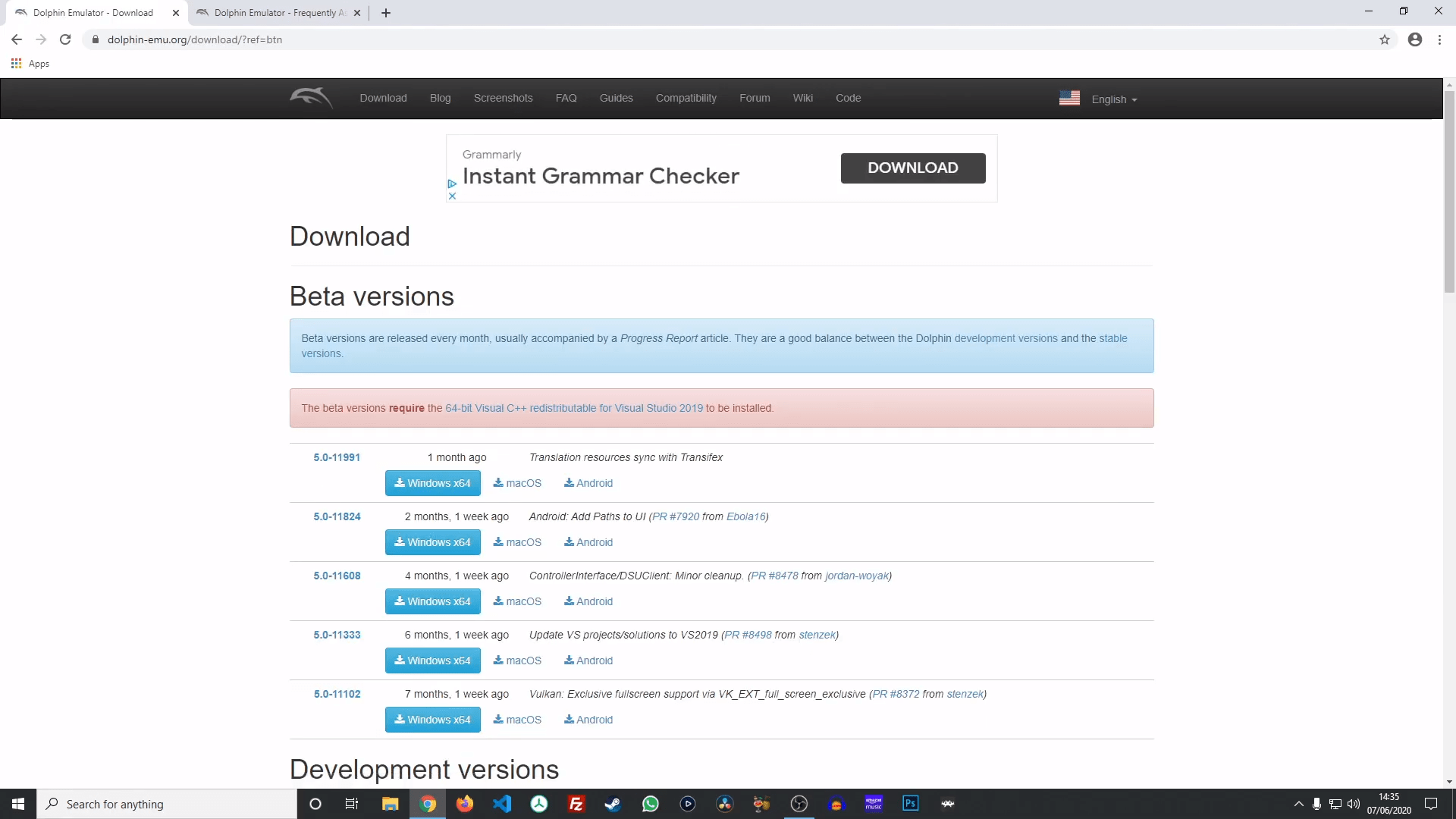
We shall download the latest beta version, which will include many of the latest developments since the release of the latest stable version.
So, click the Windows x64 button to download. Once downloaded, Dolphin will need to be unpacked from its archive using something such as WinRAR to do so.
The beta version will not have its own installer, it’s a standalone application, so simply copy the Dolphin-x64 folder wherever you wish on your PC.
Open up the Dolphin-x64 folder and run the Dolphin.exe file. You will now see the main Dolphin interface appear. It is here where you can access all of the necessary functions to get up and running.
Dolphin Controller Setup
First of all, ensure your controller is connected to your PC either by cable or wirelessly. Once you have your controller connected, click the ‘Controllers’ icon.
Next, under the GameCube Controllers section, click ‘Configure’ for the Port 1 controller. It is here where we will configure our controller to act as a GameCube controller.
Select in the ‘Device’ drop-down menu either Xinput or Dinput – Depending on which controller you are using. For example, an Xbox One Controller will use Xinput, change this according to your own needs.
Once you have done this, you can then begin to configure your controller by mapping your controller buttons to the on-screen GameCube buttons. For example, click the ‘Button A’ button on the screen, then press the button on your controller to which you wish this to be mapped.
Then simply repeat the process for all buttons, D-Pad, Control Stick, C Stick and Triggers.
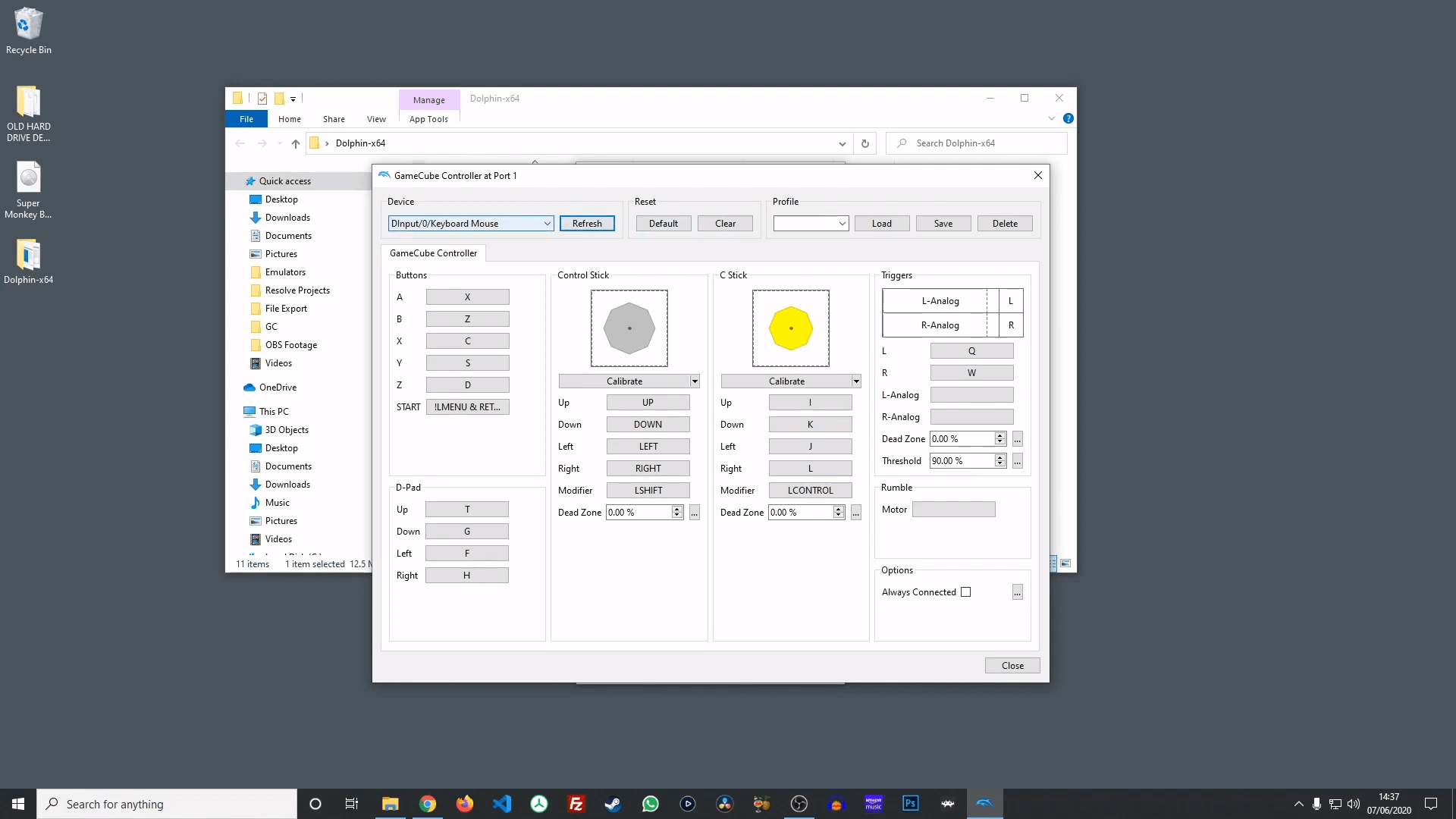
Once you have done this, you can save your settings by giving this configuration a name in the ‘Profile’ box, then clicking ‘Save’, which means you can easily recall your settings at any time.
You should only have to set up your controller once, as the last saved configuration will be used as default.
If you require additional controllers to be set up for multiplayer, repeat this process but for Ports 2 – 4 as necessary.
How to Add Games to Dolphin Emulator
You will need to source your own GameCube games to use with Dolphin, but if you already have a collection, Dolphin has a nice list or grid view that makes viewing your game library nice and easy. Simply go to, Options -> Configuration
Open the ‘Paths’ tab and click ‘Add’ under the Game Folders section, add the directory where your games are stored, and you should then see them appear in the main Dolphin window.
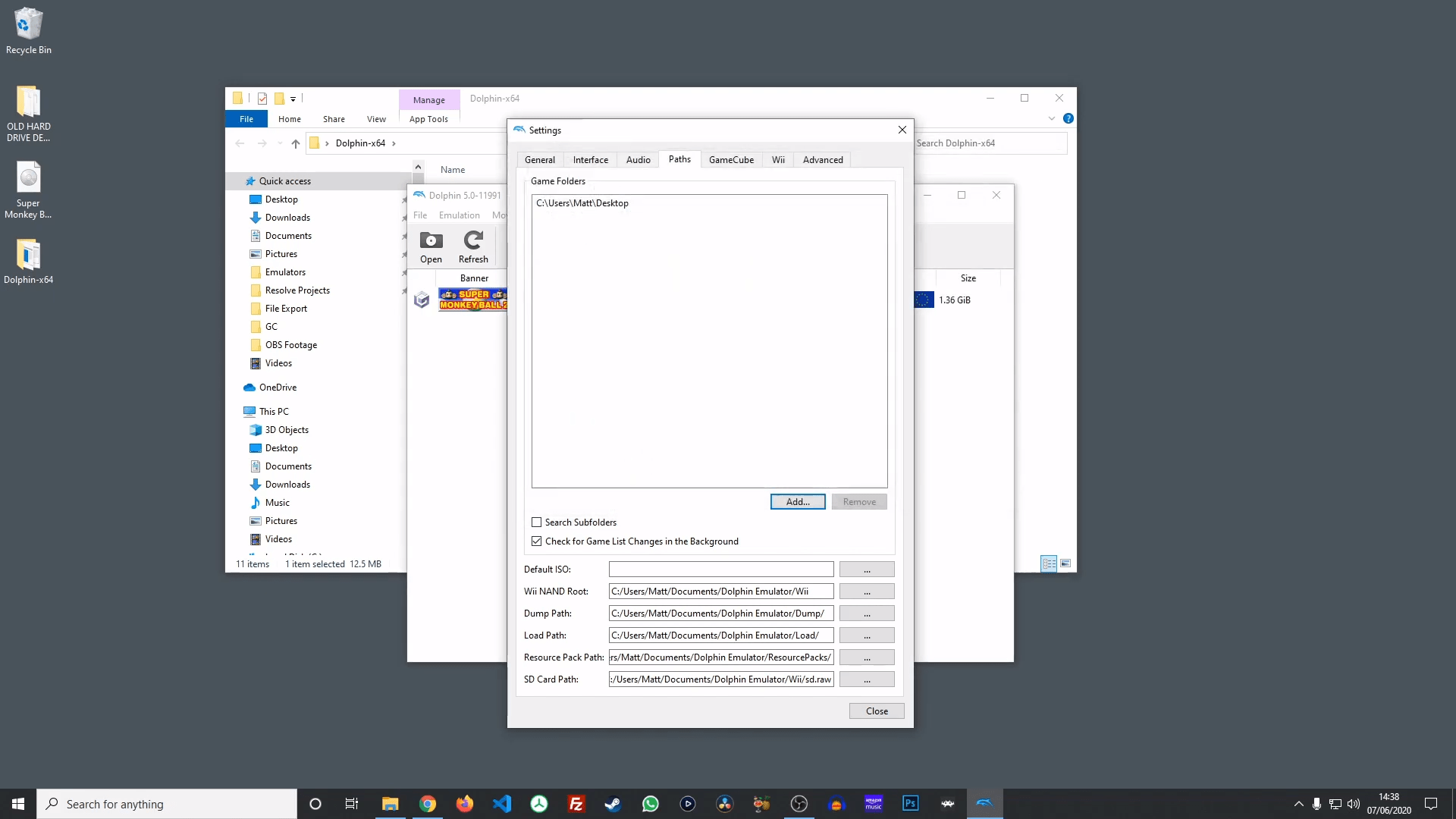
Dolphin Graphics Settings
Dolphin on the PC has a range of settings that can enhance the resolution and rendering of your GameCube games, I recommend having a play around with the settings to suit your requirements and taste.
But for now, let’s set up a few basic tweaks and get a game running. If you want more details as to what each of the options does, hover over it and you’ll get a brief description in the lower section of the Dolphin window.
First, click on the ‘Graphics’ icon in the Dolphin window. Next, depending upon the graphics card you have installed, let’s set the ‘Backend’ drop-down menu under the ‘General’ tab, select Direct3D11 and select your GPU in the ‘Adapter’ section, or simply leave the Backend setting as OpenGL.
Tick ‘Use Fullscreen’ if you wish to run GameCube games in fullscreen rather than within a reduced window.
Next, in the ‘Shader Compilation’ section, if you have a reasonably good GPU installed on your PC, select ‘Synchronous (Ubershaders)’, or if you have a lower-end system, select just ‘Synchronous’.
If you have any performance issues when running games, you can also tick ‘Compile Shaders Before Starting’, this will essentially make the game take longer to boot, but will have a more consistent performance if you have a lower spec system.
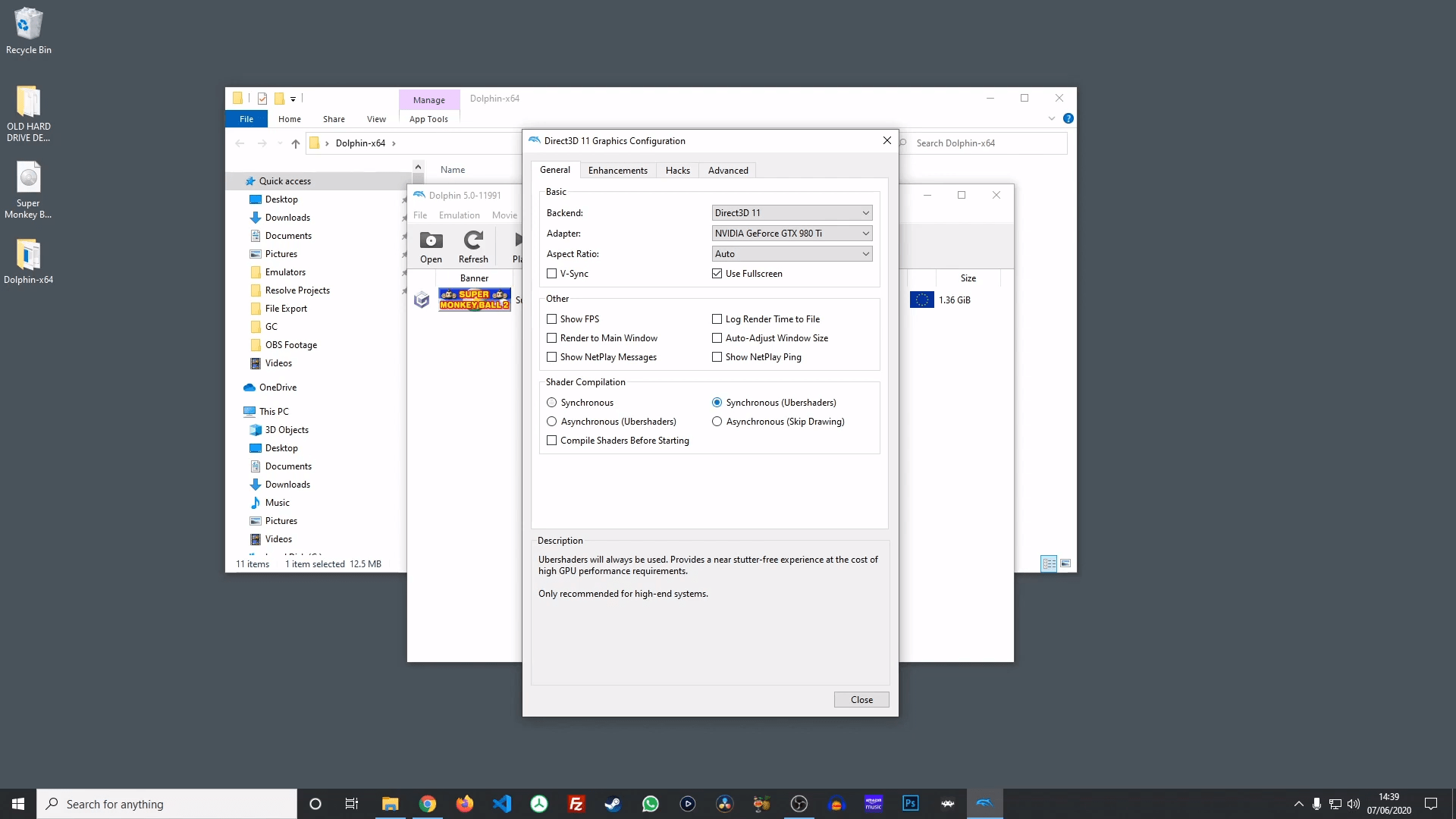
Next, go to the ‘Enhancements’ tab and select the following:-
Internal Resolution: Auto, alternatively select your native monitor resolution if you know this is the setting you want.
Next, set Anti-Aliasing to 4xMSAA
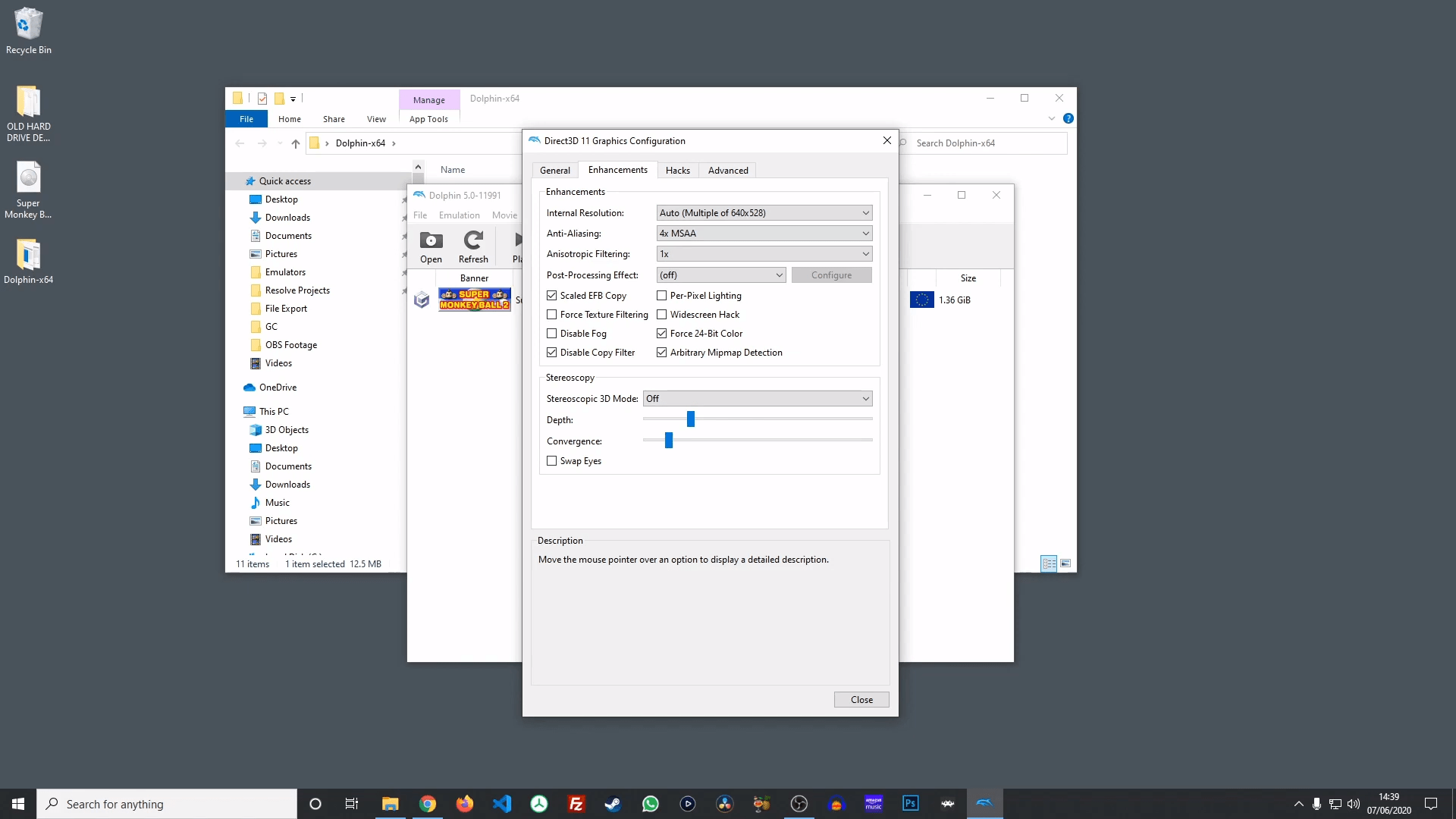
This will provide a decent level of up-scaling and anti-aliasing to the game. Do play around with these settings to see what suits you in terms of emulator performance and visual fidelity.
Launch a Game
Finally, we’ll want to launch a game to play! Simply double-click on a game in the list in the Dolphin window.
Dolphin Memory Card Management
One useful thing to know is how Dolphin handles GameCube memory cards which hold crucial save game data.
Simply proceed when the game asks you if you want to save your game to a memory card and Dolphin will automatically create a memory card/save file for you which is then automatically picked up the next time you load the game.
Alternatively, there is a memory card management section in Dolphin where you can create ‘virtual’ memory cards which can be saved to and then managed in Dolphin as required.
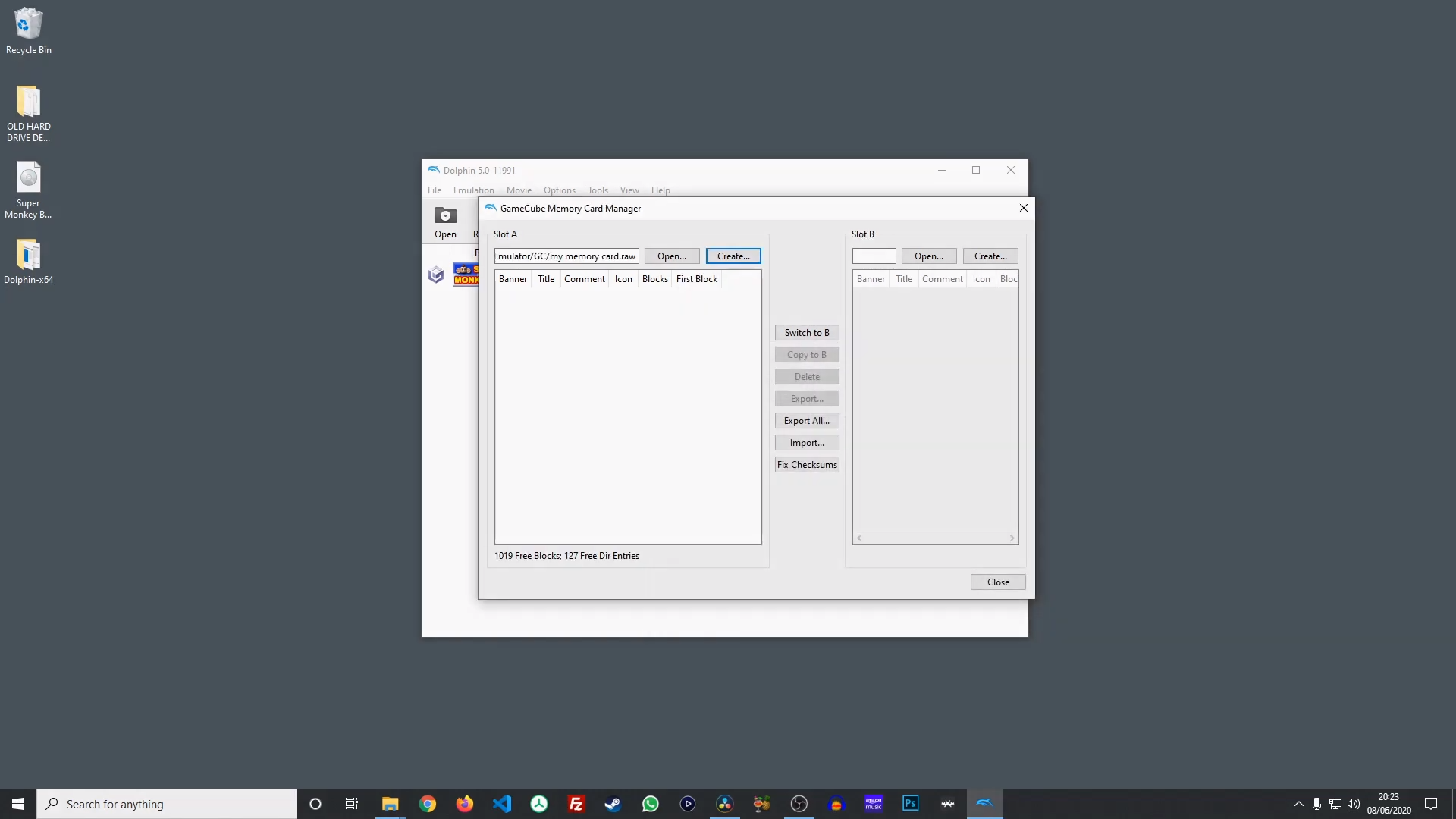
Dolphin Setup Video Guide
So in terms of getting up and running a GameCube emulator and accessing your games on your PC in a nice high-quality upscaled resolution, you are already there!
I hope this how-to-use Dolphin emulator guide has been useful in helping you get up and running playing GameCube games in Dolphin.
If you have any questions or any tips of your own, do leave them in the comments below or on the Video guide as I love to help out where I can and to learn new tricks myself.
Dolphin GameCube Emulator FAQs
Does Dolphin Work With RetroArch?
Yes, there is a Dolphin RetroArch core which is also excellent. It has fewer configuration options available but is a fully matured GameCube emulator core for RetroArch.
Check out our guide on how to set up RetroArch for GameCube.
Can You Use A GameCube Controller With Dolphin?
Yes, it is possible to use original GameCube controllers with Dolphin.
Dolphin supports the official Nintendo GameCube controller adapters designed for the Wii U and the Switch. Dolphin auto-configures/calibrates real GameCube controllers and have rumble support built in too.
Other third-party GameCube Controller Adapters are available, but you are best to check reviews and product specifications to ensure they meet your requirements. But generally speaking, many third-party adapters seem to work well with Dolphin as well as long as they have a mode that switches between PC & Wii U modes.
Can You Use Cheat Codes With Dolphin?
Yes, Dolphin has cheat code compatibility. Check out our guide on how to use cheat codes with Dolphin.

A lifelong avid gamer and computing enthusiast, Matt has decades of Retro Gaming experience. Now over 40 years old, Matt now even considers himself retro, but fortunately, nobody has developed a Matt emulator (not yet at least!).